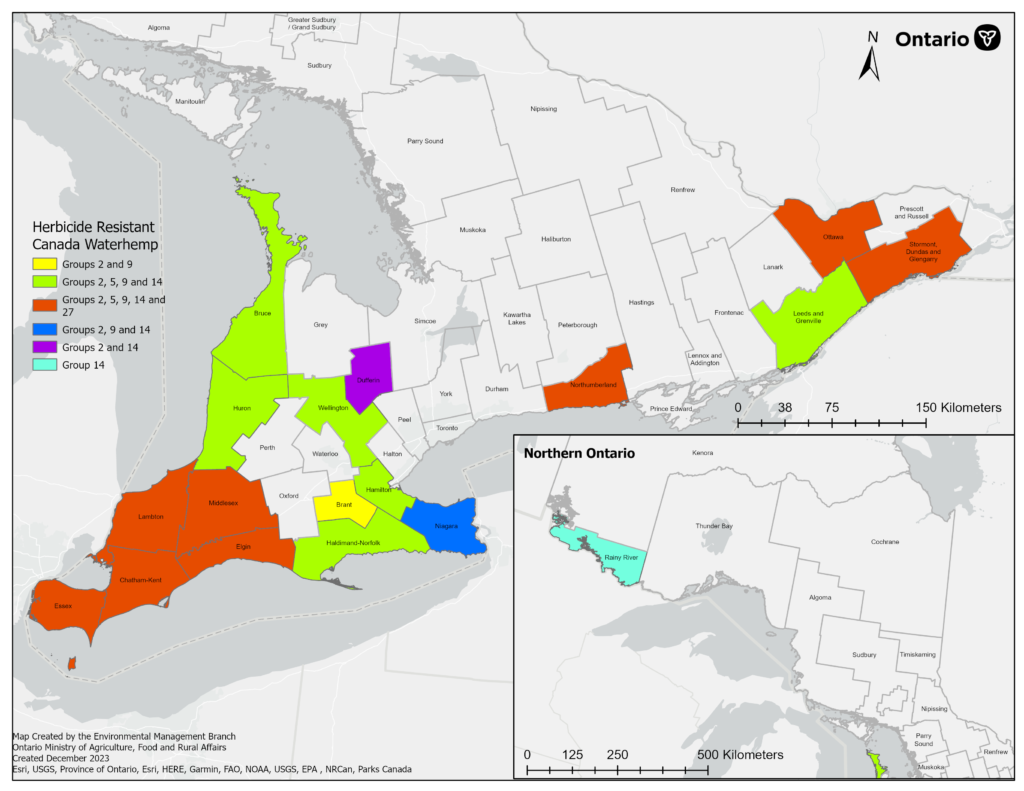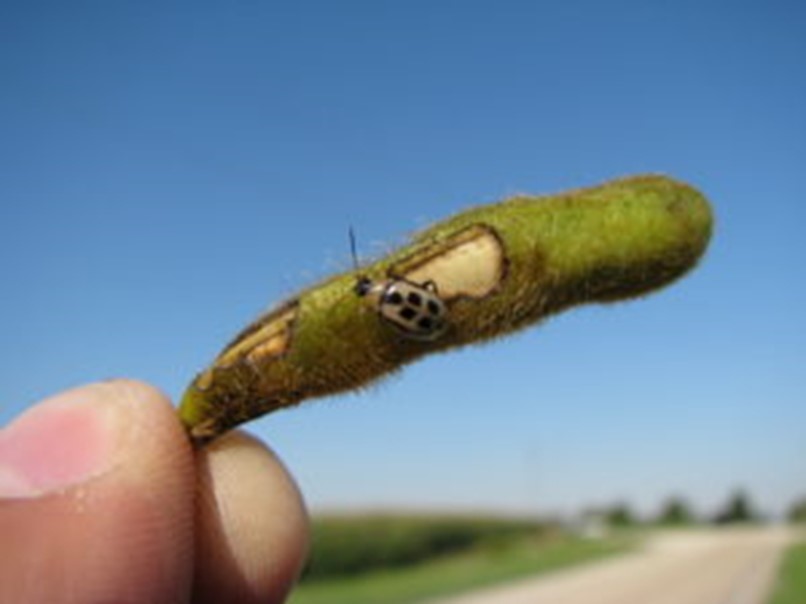To date the provincial average yield reported by Agricorp for 2023 is 53 bu/ac. This number will be updated as more acres are reported. For comparison the 10-year average farm yield is 48 bu/ac. Seeded acreage was also relatively high at 2.91 million acres. The Agricorp floating claim price was $16.56/bu. Canada is the world’s 7th largest soybean producer and Ontario as a region is the world’s 10th largest soybean producing region. Some growers reported yields over 80 bu/ac and a few research trials yielded over 100 bu/ac. However, growers also faced significant challenges including poor plant stands, excess rainfall, white mould, and a cool, wet summer. This resulted in some fields yielding poorly. A cool summer also delayed maturity resulting in a slightly later harvest for some varieties. Despite this, many fields intended for winter wheat were harvested in good time this fall. Overall, strong yields and relatively high prices made 2023 a positive year for Ontario soybean production.
Cool August Weather
August is a critical month for establishing soybean yield as both seed number and seed size are largely determined during this part of the growing season. The ideal daytime temperature for soybean is 30°Celcius (C). Much of Ontario did not have a single day during the month of August that reached 30° C. In fact, cities such as Windsor, Hamilton, and Ottawa reported the lowest daytime highs for the month of August ever recorded. Typically, Windsor has 6 days above 30° C and this year there were no days above 30° C. Soybean yields could have been higher with warmer temperatures. A warmer summer would also have resulted in less white mould.
Phosphorus, Potassium, and Sulphur
A soybean crop will remove a significant amount of phosphorus (P) and potassium (K) from the soil (40 lbs/ac of actual P and 70 lbs/ac of K for a 50 bu/ac crop). Regular soil testing is the most effective way to manage soil nutrients properly. Ontario research has shown that fields low in both P and K can yield up to 20 bu/ac less than fields with adequate soil fertility. Several public and private trials have been conducted over the last few years to assess if soybeans need sulphur to achieve maximum yields. To date, trials on clay or clay-loam soils have shown no significant yield advantage to the addition of spring applied AMS (ammonium sulphate). However, in 2023 sandy soils did response well to the addition of AMS. At one site conducted by Maizex Seeds, soybean yields increased by 11 bu/ac with the addition of 100 lbs/ac of AMS. These results are a strong indication that sulphur may now be necessary on sandy soils in Ontario. Additional trials are planned for 2024 to update present sulphur recommendations. The University of Guelph is also conducting research to validate a sulphur soil test for Ontario.
White Mould
White mould pressure was severe this year in some fields especially in eastern Ontario (Figure 1). Take note of which fields suffered from white mould to ensure best management practices can be used in the next soybean crop. Overwintering bodies (sclerotia) of the disease can remain viable in the soil for decades. Crop rotation and variety selection are key management tools to minimize the disease. Early planting, shorter season varieties, no-till, and the use of foliar fungicides also reduces white mould yield loss.

Figure 1. White mould in soybeans.
Weed Management
Waterhemp continues to spread throughout the province (Figure 2.). A close relative of pigweed, waterhemp is a competitive annual broadleaf weed that has been found resistant to five different herbicide groups. This makes management a challenge, particularly in soybeans. Two-pass herbicides programs are the most effective way to manage this weed. This requires one to apply an effective pre-emergence herbicide first. Waterhemp seedlings that escape the pre-emergence herbicide, or emerge later, are best controlled when a herbicide tolerant soybean cultivar, like “Xtend” (dicamba tolerant) or “Enlist E3” (2,4-D tolerant) is planted. You can search for management options to control waterhemp in the Ontario Crop Protection Hub.

Figure 2. Map of Herbicide Resistance to Canada Waterhemp in Ontario.
Bean Leaf Beetle
Bean leaf beetle populations are on the rise. This insect pest is now being reported further north than in the past. High levels of bean leaf beetle and the resulting pod feeding were reported in Wellington, Grey, and Simcoe counties in 2023. Identity Preserved (IP) and seed fields are especially at risk since feeding on the surface of the pod exposes the seed to disease (Figure 3). In some cases, the beetles outright clip the pods off the plant, leaving them on the ground. In IP or seed fields, if beetles are still actively feeding by R6 and 10% of the pods have feeding injury, a spray is warranted. Rarely is leaf defoliation enough of a concern in the later R stages to warrant spraying. Pod injury on crush soybeans typically does not warrant control either. Registered products can be found on the OMAFRA Crop Protection Hub.

Figure 3. Bean leaf beetle pod feeding. H. Bohner, OMAFRA
Variety Selection
One of the most important management decisions to achieve maximum profitability is variety selection. Significant yield differences are common among different soybean varieties. Yield differences over 10 bu/ac can be found within similar maturity groups in the 2023 Ontario Soybean Variety Trials. Results from these trials can be found at gosoy.ca.